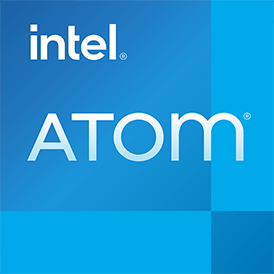Intel Celeron N4120 vs Apple M4 8 Core
We compared two laptop CPUs: Intel Celeron N4120 with 4 cores 1.1GHz and Apple M4 8 Core with 8 cores 4.41GHz . You will find out which processor performs better in benchmark tests, key specifications, power consumption and more.
Main Differences
Intel Celeron N4120 's Advantages
Lower TDP (6W vs 20W)
Apple M4 8 Core 's Advantages
Released 4 years and 11 months late
Better graphics card performance
Higher specification of memory (7500 vs 2400)
Larger memory bandwidth (120GB/s vs 38.4GB/s)
Higher base frequency (4.41GHz vs 1.1GHz)
More modern manufacturing process (3nm vs 14nm)
Score
Benchmark
Cinebench R23 Single Core
Intel Celeron N4120
443
Apple M4 8 Core
+372%
2091
Cinebench R23 Multi Core
Intel Celeron N4120
1065
Apple M4 8 Core
+954%
11229
Geekbench 6 Single Core
Intel Celeron N4120
343
Apple M4 8 Core
+971%
3674
Geekbench 6 Multi Core
Intel Celeron N4120
1022
Apple M4 8 Core
+1236%
13664
General Parameters
Nov 2019
Release Date
Oct 2024
Intel
Manufacturer
Apple
Laptop
Type
Laptop
x86-64
Instruction Set
ARMv9
Gemini Lake Refresh
Core Architecture
Apple M4
N4120
Processor Number
-
BGA-1090
Socket
Apple M-Socket
UHD Graphics 600
Integrated Graphics
Apple M4 GPU (8-core)
Package
-
Transistor Count
28 billions
14 nm
Manufacturing Process
3 nm
6 W
Power Consumption
20 W
105 °C
Peak Operating Temperature
100 °C
CPU Performance
4
Performance Cores
4
4
Performance Core Threads
4
1.1 GHz
Performance Core Base Frequency
4.41 GHz
-
Efficiency Cores
4
-
Efficiency Core Threads
4
-
Efficiency Core Base Frequency
2.59 GHz
4
Total Core Count
8
4
Total Thread Count
8
-
Multiplier
44
32 K per core
L1 Cache
192 K per core
4 MB shared
L2 Cache
16 MB shared
No
Unlocked Multiplier
No
Memory Parameters
DDR4-2400, LPDDR4-2400
Memory Types
LPDDR5X-7500
8 GB
Max Memory Size
-
2
Max Memory Channels
-
38.4 GB/s
Max Memory Bandwidth
120 GB/s
No
ECC Memory Support
No
Graphics Card Parameters
true
Integrated Graphics
true
200 MHz
GPU Base Frequency
500 MHz
700 MHz
GPU Max Dynamic Frequency
1800 MHz
96
Shader Units
1024
12
Texture Units
64
2
Raster Operation Units
32
12
Execution Units
128
5 W
Power Consumption
15
3840x2160 - 30 Hz
Max Resolution
-
0.14 TFLOPS
Graphics Performance
3.7 TFLOPS
Miscellaneous
2.0
PCIe Version
-
6
PCIe Lanes
-
SSE4.2
Extended Instruction Set
-







